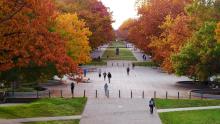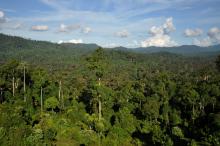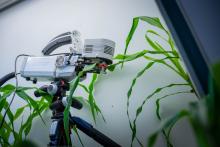Researchers with UBC Science have unlocked some of the genetic secrets that enable pine and spruce trees to maintain a battery of chemical defenses against insects—including British Columbia’s notorious pine beetles.
"Figuring out how these naturally occurring defenses work has important implications for the long-term sustainability and health of our forests," says Joerg Bohlmann, co-author of the new study, set to appear this week in the Proceedings of the National Academy of Sciences. The findings may ultimately allow forest stewardship programs to reinforce a forest's inherent resistance to pests, says Bohlmann who is based at UBC's Michael Smith Laboratories and teaches in the Department of Botany.
Conifers are some of the oldest and longest living plants on the planet, says Bohlmann. Weve opened the book to understanding how they can survive in one location for thousands of years despite attacks from generations of insects and diseases.
Their study examines the molecular biochemistry of conifers interacting with genomes of bark beetles and bark beetle-associated fungal pathogens. Bohlmanns study appears in todays edition of the Proceedings of the National Academy of Sciences.
Figuring out how these naturally occurring defenses work has important implications for the long-term sustainability and health of our forests, says Bohlmann, whos working with the B.C. Ministry of Forests and Range, the forestry industry and the Canadian Forest Service.
Bohlmann is also co-leader of the recently announced $4-million project that Genome BC and Genome Alberta is funding to investigate the mountain pine beetle infestation at the genomic level.
Insect pests and pathogens cause annual losses of billions of dollars to conifer-based forest economies in North America and Europe. In B.C., the mountain pine beetle epidemic has killed about 40 per cent of the pine forests since its first appearance in the mid 1990s.
This is the largest recorded bark beetle outbreak in Canada, leaving B.C. with 13 million hectares of grey and red dead pine an area four times the size of Vancouver Island and a volume of dead timber equivalent to 530 million telephone poles.
Bohlmann is leading UBCs and international research programs on forest health genomics. In 2006, Bohlmann and a team of international scientists completed the worlds first physical map and sequencing of a tree genome the third plant ever sequenced.
He is based at UBCs Michael Smith Laboratories, a multidisciplinary research facility. Bohlmann also holds teaching appointments in the departments of Botany and Forest Sciences and is an associate at UBCs Wine Research Centre.


